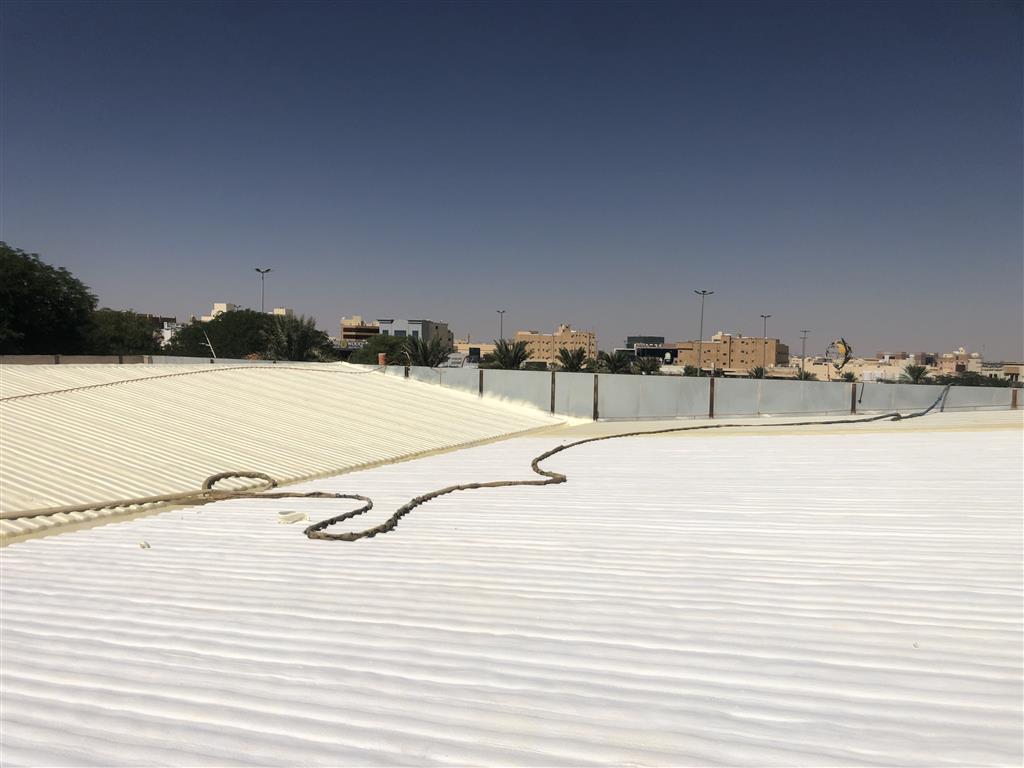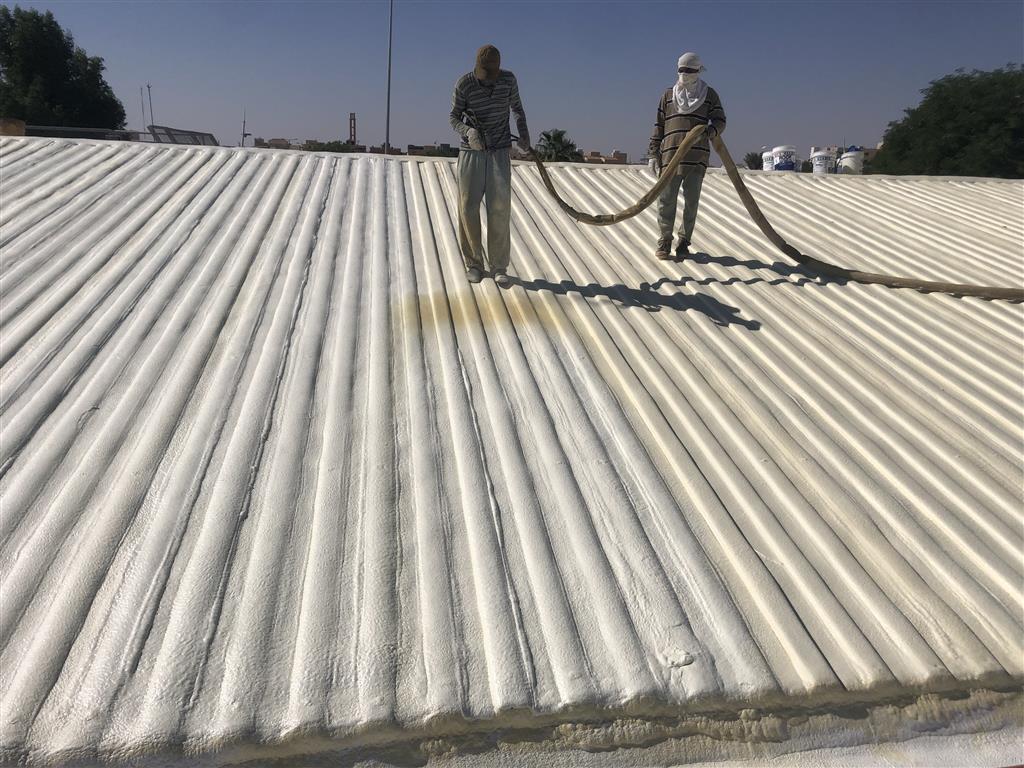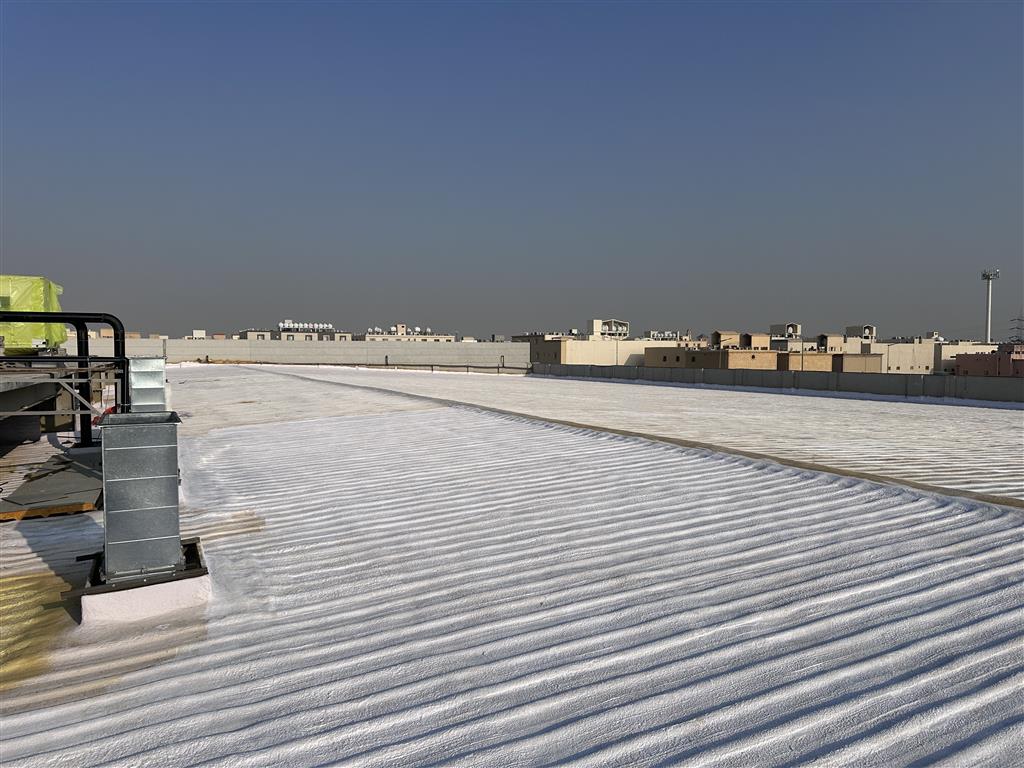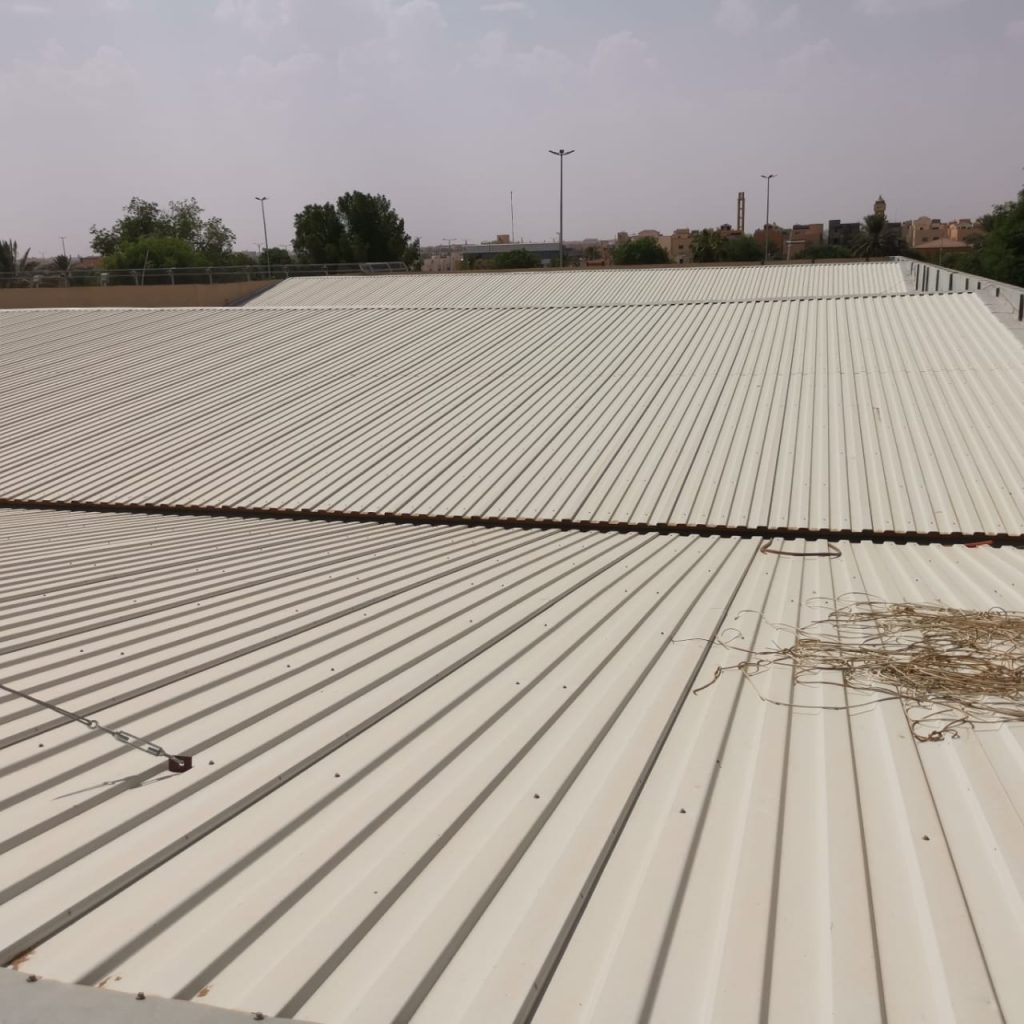Water and thermal insulation
Spray Polyurethane Foam + Protection Layers It is a system to resist water leakage and reduce heat transfer in buildings
WATER AND THERMAL INSULATION
Water and thermal insulation using a polyurethane system and a protective layer.
A system to resist water leakage in buildings and limit heat transfer in buildings
Advantages
. It is considered both water and thermal insulation
. The insulation layer is light in weight, as the weight of the material is 1.6 kg/m2 at a density of 40 kg/m3
. There are no connections to the insulation layer, as it is sprayed in layers with each other
. Faster water and thermal insulation systems together are better than other insulation systems
General field preparations before starting insulation work – isolating surfaces
1 – The height of inverted bridges on roofs must not be less than 40 cm
2 – Make concrete bases for (water tanks, air conditioning bases and around air conditioning pipes) with a height of no less than 40 cm.
3 – Extending electricity pipes before starting insulation work and making a cement mixture on them to preserve them
4 – Make a lintel at the entrances to the roof doors, 20 cm high and 20 cm wide
5 – Extending the plumbing pipe outlets before starting insulation work (preferably extending them around the roof jacket)
6 – Completion of the work of plastering the interior and exterior surfaces before starting the insulation work
Isolation implementation stage
1 – Ensure that the floors are clean of dirt and dust and free of water and moisture
2 – Start making the foam concrete strings (pouring the slopes) towards the refineries at a ratio of 1:100 and wait the next day and spray them 3 times for three days.
3 – After the foam dries completely, the drying stage is completed by spraying the insulation layers
4 – Spray a water and thermal insulation layer of polyurethane thickness (3-4-5, etc.) on layers, with a layer thickness of 1.50 cm until the thickness is reached.
Required with acrylic paint to protect the insulation from ultraviolet rays
5 – Spread a layer of non-woven fabric weighing 120 grams/m2 over all layers of insulation
Post-insulation stage (roofs)
1 – In the event that there are any modifications in any field work, the technical team of the Insulation Department must be consulted to give the correct technical consultation for the modification work, including
It does not interfere with the insulation work protecting the building
- All Services
- EPDM waterproofing using
- Waterproofing Using PVC
- Waterproofing using Spray polyurea
- Waterproofing using acrylic paints
- Waterproofing using cement materials
- Waterproofing using polyurethane paints
- Waterproofing using Bitumen’s Membrane
- Epoxy paints and industrial floors
- Treatment Expansion Joints
- Detecting and treating leaks
- Water and thermal insulation
- Water Isolation
- Heat Isolation




